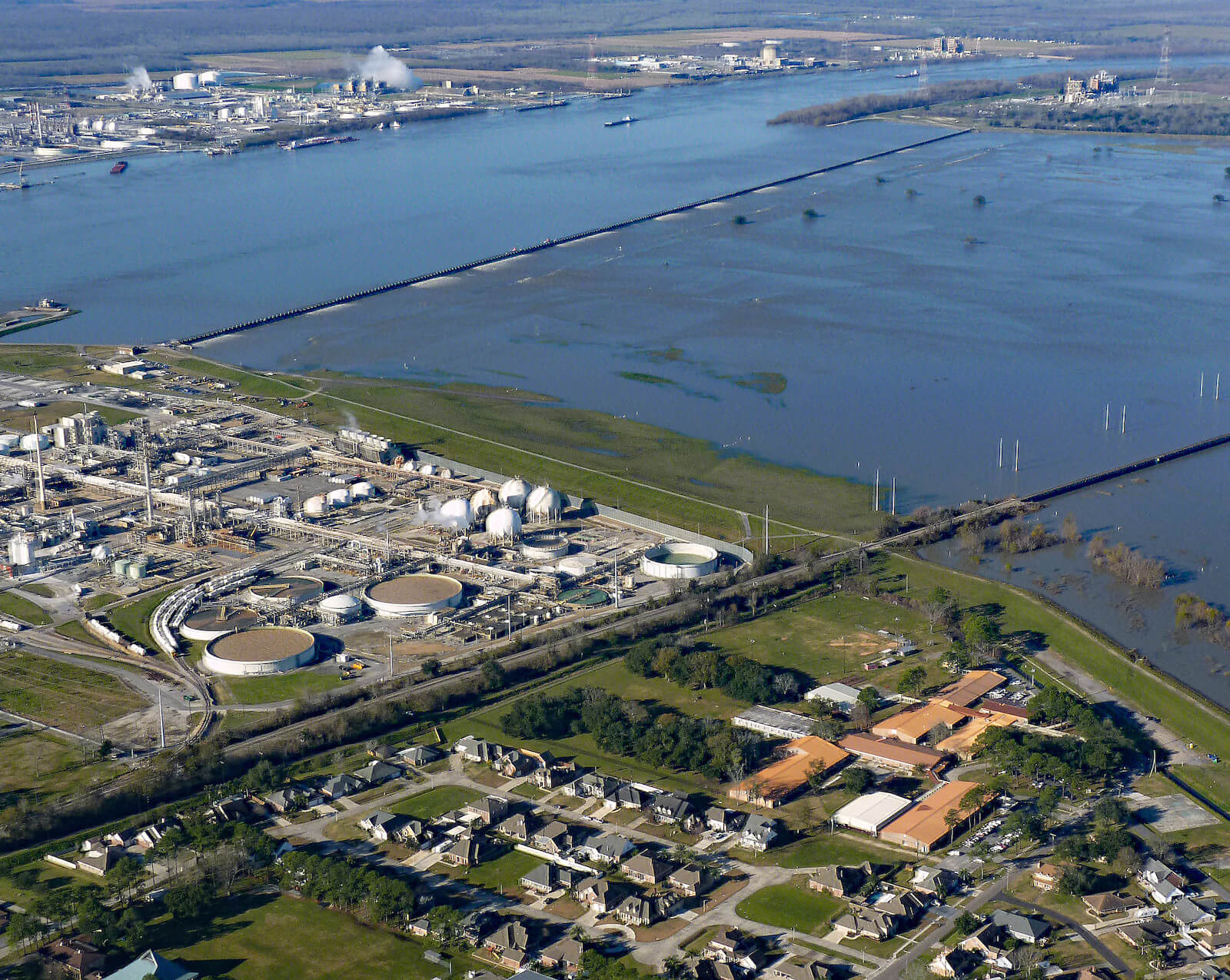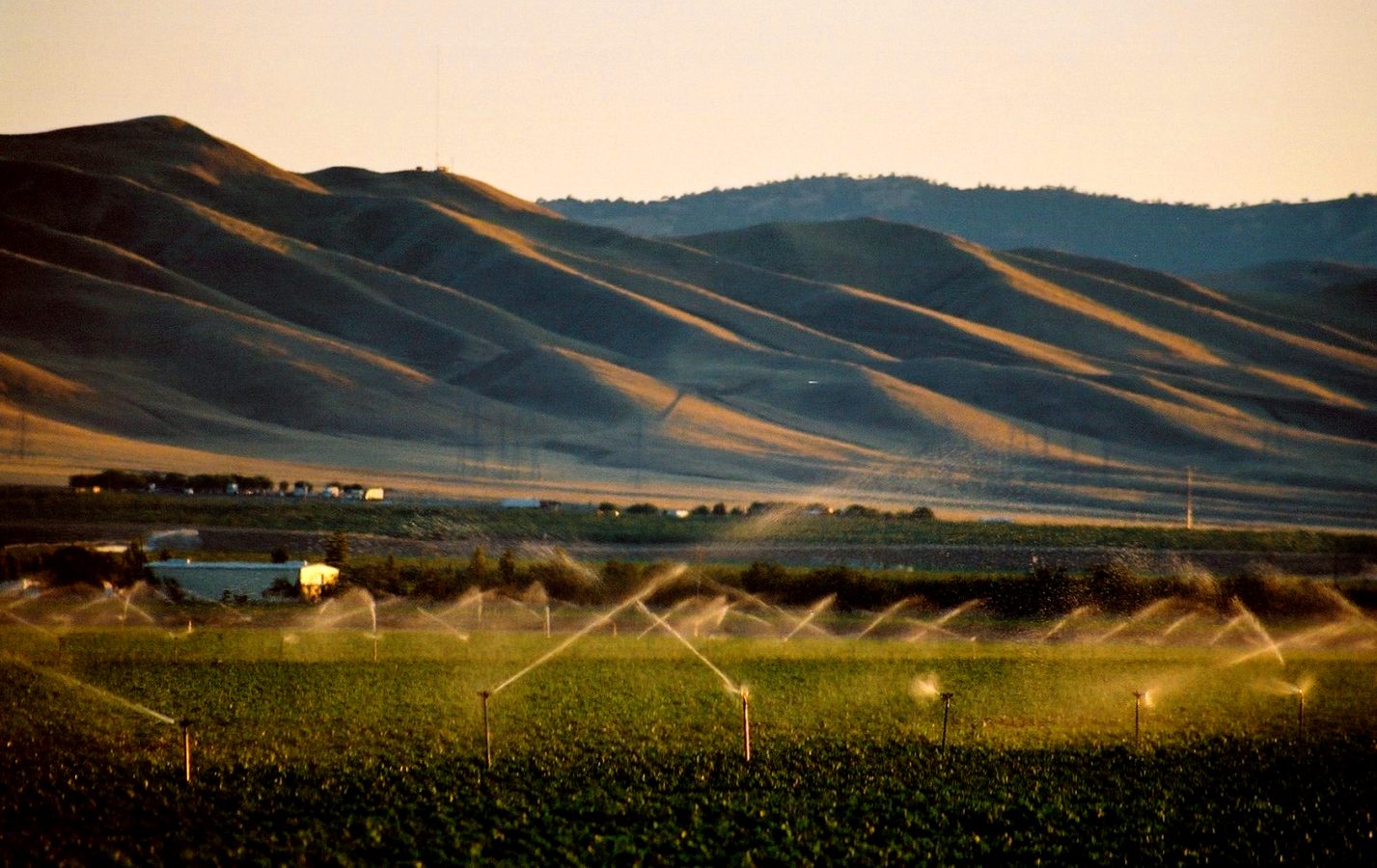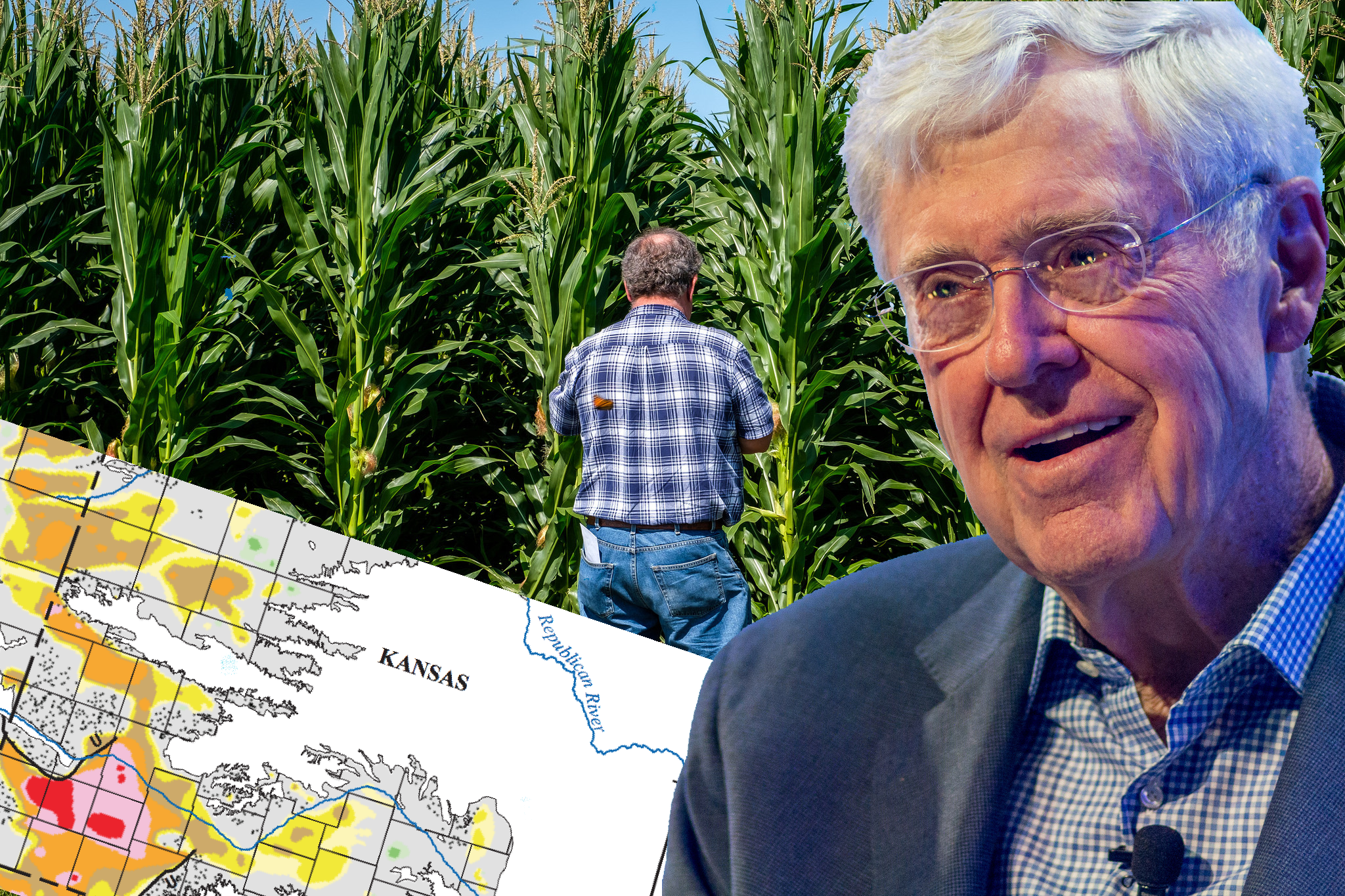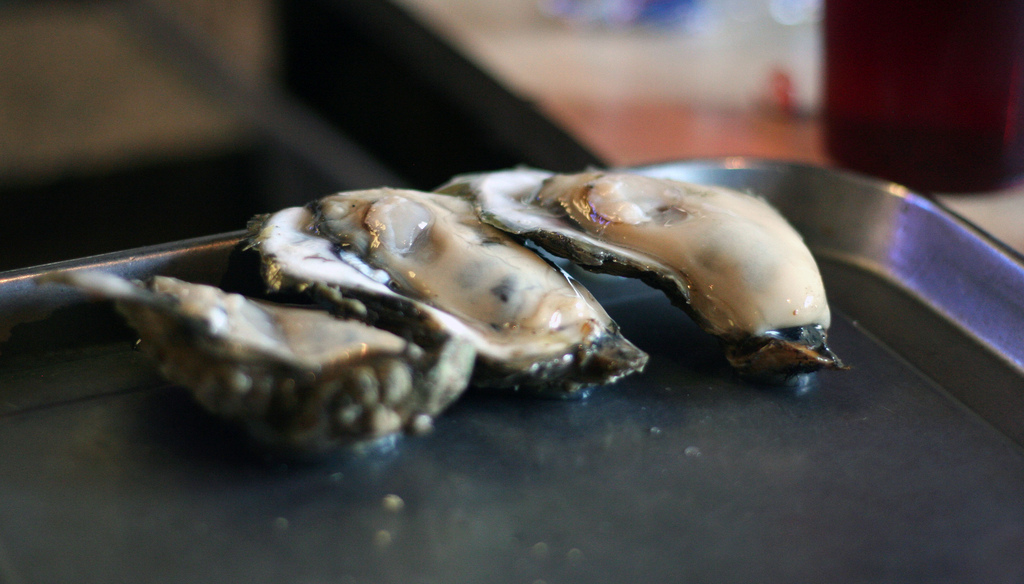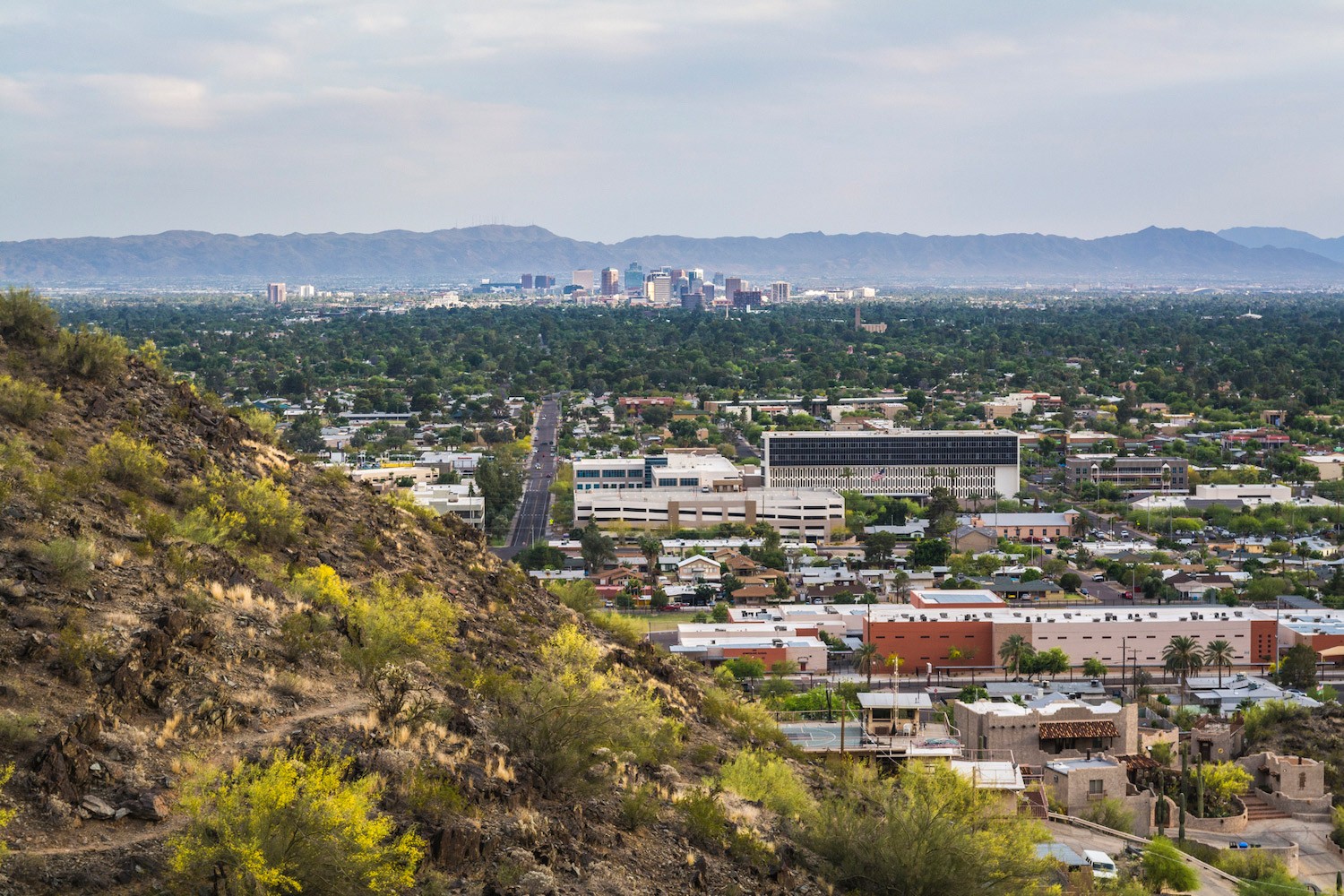
Bob Miller
There is a limited and shrinking supply, growing demand, and a long-run picture that looks, from many angles, hopelessly apocalyptic. Inside the elaborate, diverse, and ever-evolving effort to manage water in what some have called “America’s least sustainable city.”
An hour north of Phoenix, Arizona, Chip Norton drives his truck toward the Verde River. Norton spent the last decade of his career as a public works contractor for water facilities. He retired in 2008. Even so, at 9 a.m. on a Saturday in early June, he is already immersed in his new work, checking on barley fields.
Norton leaves the paved road and traces along a grain field. He parks and steps from the truck, his boots raising dust.
“Amber waves of grain,” he says, moving into a golden ocean of stalks. “All this is malt barley.”
Norton plucks a barley head and spins it between his fingers. One of his business partners, Hauser and Hauser Farms, will start to harvest this crop about a week after I meet him, when its moisture level falls a notch or two below 15 percent. “In Arizona,” Norton says, “that’s not a problem.”
Norton is the president of two-year-old Sinagua Malt. He contracts with local farms for malt barley, which, once harvested, his team will then malt in their nearby Camp Verde, Arizona facility before selling mostly to Phoenix-based craft brewers. The Verde Valley farmers Norton works with have replaced a total of between 125 and 150 acres of feed-corn and alfalfa with malt barley. Sinagua barley is grown in a way that keys into the natural cycles of the Verde River. For his work, Norton doesn’t take a salary. What he seeks is proof of concept. He wants to show that his operation, writ far and large, has the potential to help sustain rivers like the Verde—a crucial Arizona waterway that provides to Metro Phoenix.

Chris Malloy
Chip Norton, president of two-year-old Sinagua Malt, stands in a field of malt barley. He says a simple, calculated crop replacement from alfalfa and feed-corn to malt barley can help by curbing the land’s need for water
Walking parts of Phoenix today, you might spot the ruins of an ancient canal, but probably not. Phoenix expanded so fast in the 20th century that developers razed structures built by the Hohokam, prehistoric North American Indians who lived in present-day central and southern Arizona as early as the 3rd century, until laws were enacted to protect what remained. In 1920, before the building boom began, Phoenix was home to 29,000 people—fewer than the area supported 800 years before. By 1950, Phoenix had grown to 107,000 people; by 1960, to 439,000. And today, Phoenix is home to 1,660,000 people, making it the fifth-largest city in the country. The suburban towns around the city—which, together with Phoenix, are collectively known as Metro Phoenix—house some 4.5 million human souls. And today, just like in the past, the good people of this Sonoran basin face immense resource challenges.
These challenges threaten the desert metropolis’s sustainability, in both the near and distant future. By 2100, city summer temperatures are projected to have risen by 9.2 degrees. (July days already average 104 degrees.) Many of Phoenix’s sustainability obstacles are tied to food systems: farming, transportation, recycling. But the most elemental and harrowing issue that city leaders will have to face reaches back not only to the Hohokam, but to the very meaning of “desert.”
Water. The main issue is water. In Metro Phoenix, everyday dihydrogen monoxide will soon be liquid gold.
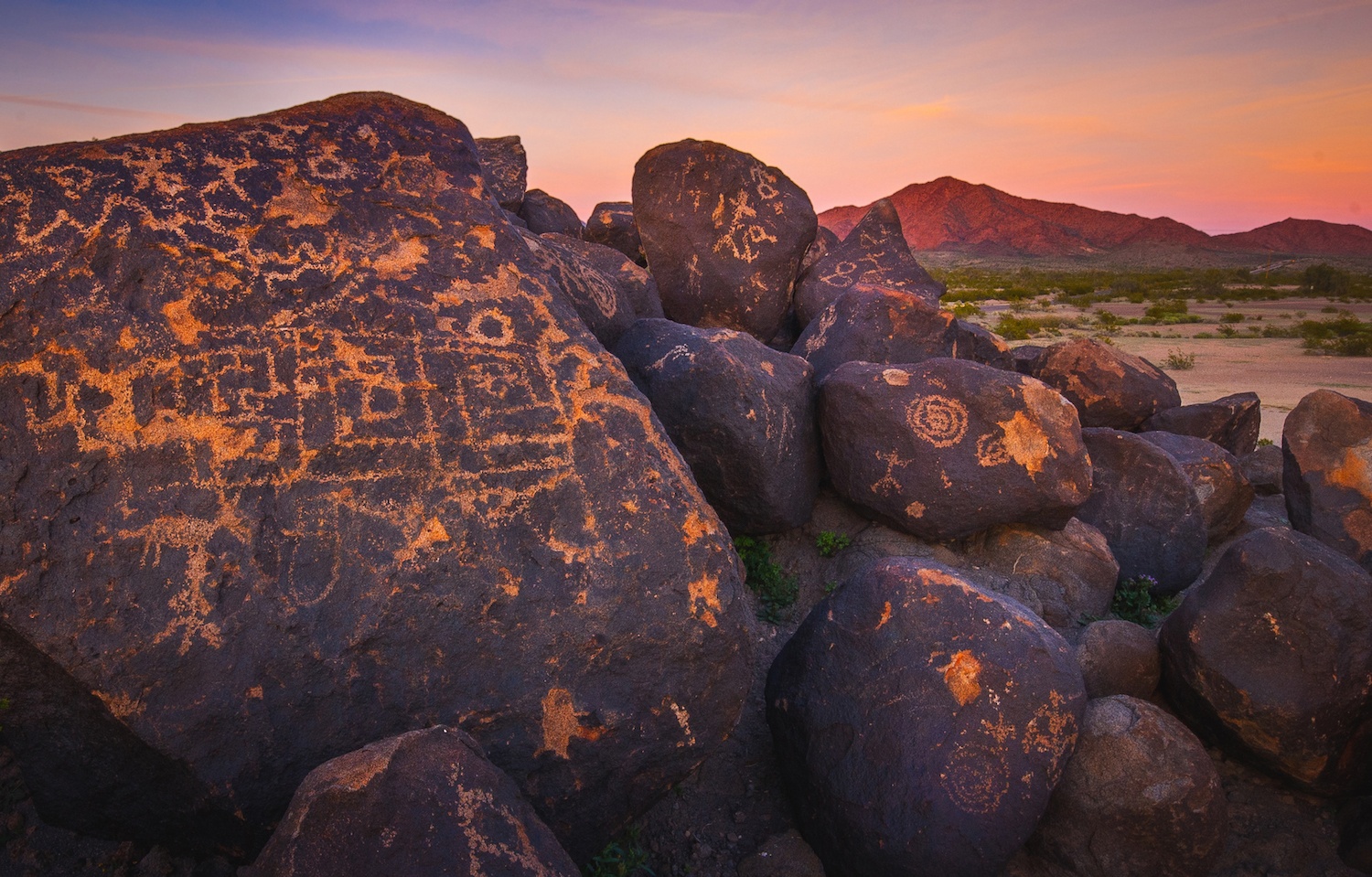
Hohokam petroglyphs at the Painted Rock Petroglyph Site, Maricopa County, Arizona
Bob Miller
Norton climbs back into his truck. Once he fires the engine, a dashboard warning chimes. He grips the sun-faded wheel tightly. “The project specifically focuses on water conservation—streamflow in the Verde River,” he says. A simple, calculated crop replacement can help by curbing the land’s need for water.
In this part of Arizona, growing an acre of alfalfa requires about 1.6 million gallons of water per year. An acre of feed-corn requires about 1.3 million gallons per year. Malt barley requires just 978,000 to a little more than 1 million gallons per year. When you multiply these numbers by many acres, the difference soars into the millions of gallons; in a given year, 326,000 gallons is enough to supply about three families with water, a measurement known as an acre-foot. On top of using less water, malt barley’s season can better align with the Verde River’s rhythms. In late winter, the Verde swells with snowmelt from mountainous parts of the Copper State. In summer, when feed-corn and alfalfa need water, the river runs lower.
“They use most of their water when there’s the least amount of water in the river,” Norton says of feed-corn and alfalfa. “So that’s where you’re going to have the biggest chance of intermittent flows—which is the beginning of the end for a free-flowing river.”
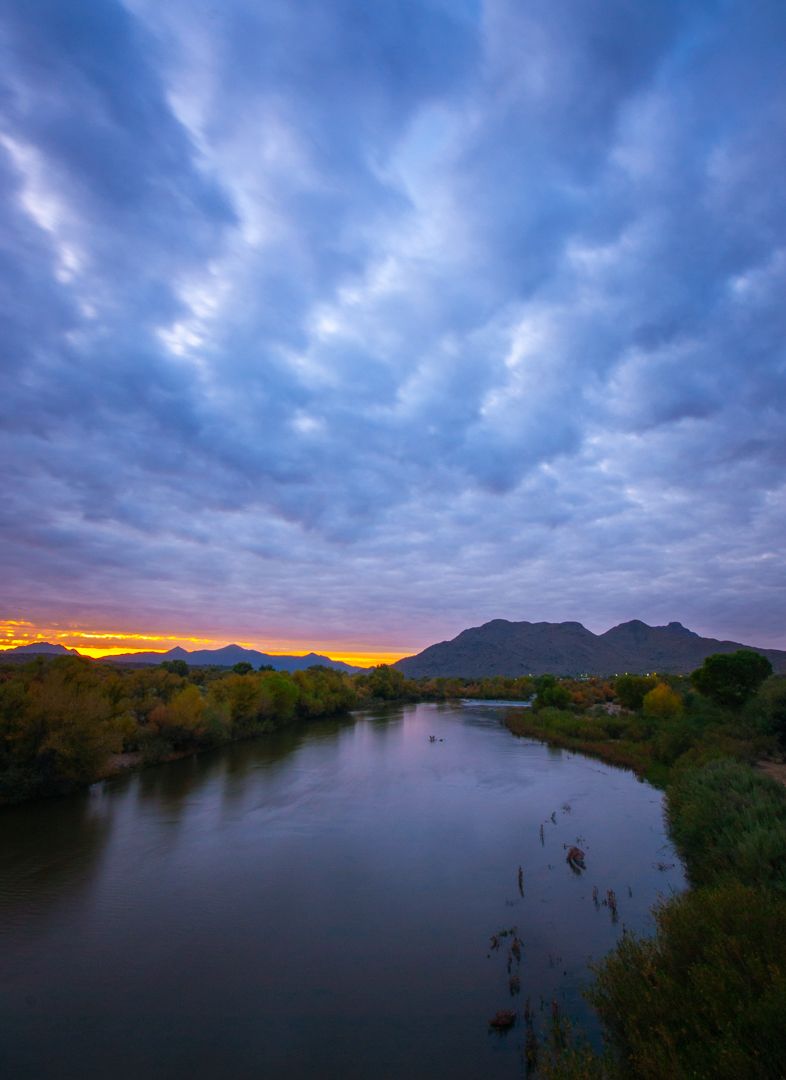
Bob Miller
Sunrise over the Verde River. Fort McDowell, Yavapai Nation
Malt barley can be planted in late January, when the river is more robust. It is then harvested in mid-June, meaning it requires no water at a time when the Verde is already low for the summer. “You don’t irrigate it after Memorial Day,” Norton adds, “so you really aren’t using any summer water during those three months.”
Kimberly Schonek, a hydrologist with The Nature Conservancy, has calculated that Sinagua Malt’s crop replacement leaves an extra 43 million gallons of water in the Verde River every year. “I think these products are critical in their demonstration of a solution,” says Schonek, who, as Verde River project manager, monitors the river and develops tools to help restore its flow. “Crop choice is one of the few key things that Arizona can address.”
Together, the Salt River and Verde River—through a network of canals, wells, dams, and lakes known as The Salt River Project—provide Metro Phoenix with one of its primary water sources. The city and its outlying towns use groundwater—water naturally settled into subterranean aquifers—as a second vital source. The third and final primary water source comes through the pumps and aqueducts of the Central Arizona Project, some 190 miles from the body of water that gives Arizona its squiggled western border: the Colorado River.
The problem is that the Colorado River’s water supply is changing. Seven states (and parts of Mexico) rely on Colorado River water. Just east of Las Vegas, Nevada and nestled into the high, western horn of Arizona’s border, Lake Mead—the reservoir above the Hoover Dam that collects the Colorado and routes to the lower basin states (Arizona, California, and Nevada)—has dipped to historic lows. In recent years, it has fallen to its lowest levels since Lake Powell was formed—since before man landed on the moon.
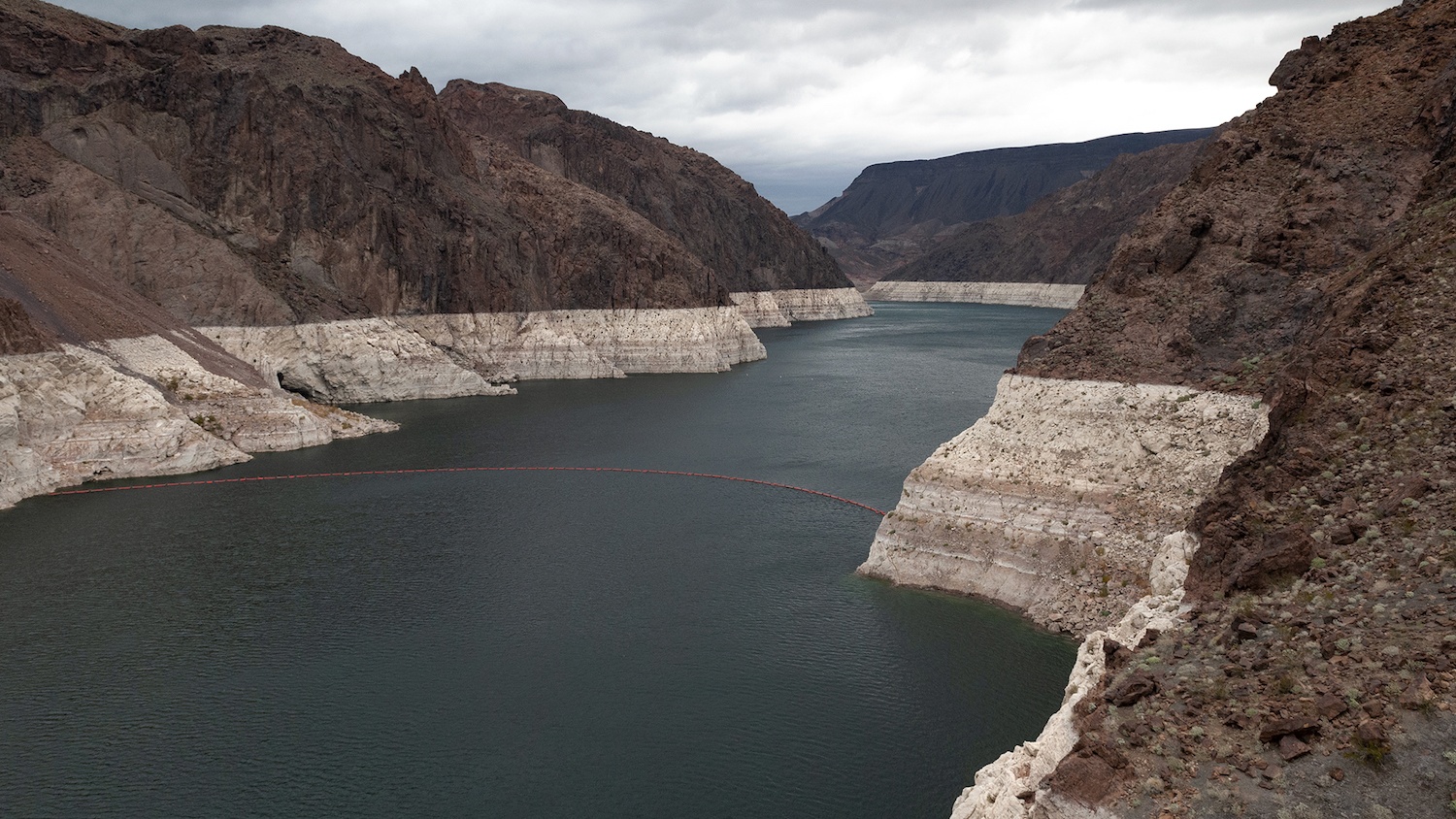
If Lake Mead were ever projected to fall below certain levels, the Drought Contingency Plan would trigger rationing, ensuring that the 40 million basin state people who benefit from the Colorado River’s water could continue to do so
Bob Miller
Though a recent snowy winter has brought the reservoir back up some, there are complex, interlocking reasons for the change. The American Southwest is emerging from a 20-year drought, which has reduced streamflow. On top of that, in 1922, when the lower and upper basin states (New Mexico, Utah, Wyoming, and Colorado) met to divide water rights between them, they allocated following a wetter cycle. When assigning rights, they used the figure of 16.4 million acre-feet of water per year as the streamflow of the Colorado River. That wasn’t accurate. Though streamflow can vary greatly from year to year, its mean flow is actually about 3 million acre-feet per year lower than their estimate had been.
Put simply: The states that rely on the Colorado for their water supply thought it could provide more than it actually could.
To compensate for the discrepancy, the basin states and Mexico reached an agreement in 2019. The Colorado River Drought Contingency Plan (DCP) provides safeguards that, in response to past overallocation, protect the Colorado River from being overdrawn. The goal is a continued water supply. If Lake Mead were ever projected to fall below certain levels, the DCP would trigger rationing, ensuring that the 40 million basin state people who benefit from the Colorado River’s water could continue to do so—and that agriculture, powerplants, and other vital cogs in the clockwork of Southwestern civilization would keep running.
If triggered, rationing would diminish greater Phoenix’s water supply. This is because, as a result of the U.S. Supreme Court case Arizona v. California, decided in 1963, Arizona’s rights are junior to other basin states, like neighboring California. As such, under the DCP, Arizona would face earlier cuts. With higher tiers of rationing and less Colorado River water, the metro area would have to draw more heavily on groundwater and the Salt River Project, including from the Verde River. And like many rivers of the West, the Verde has become fragile.
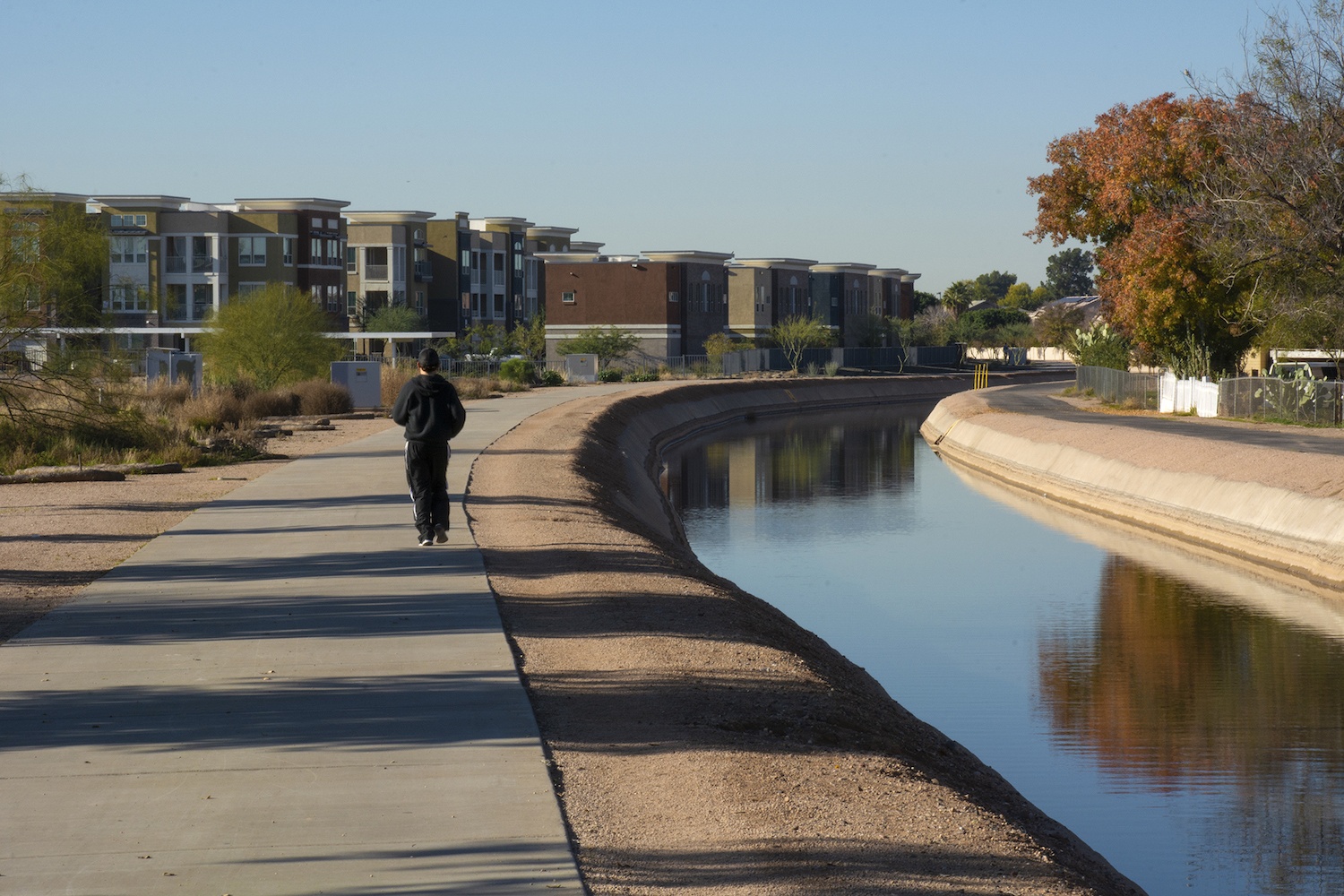
Though drip irrigation is more efficient, irrigating by canal is an ancient practice in Arizona. Pictured here, a canal in Gilbert, Arizona, a suburb of Phoenix
Bob Miller
Norton parks beside a compact legion of trees. We walk down a shady slope where the soil feels like cool, gray powder. Then the ground levels out, the soil turns to rocks, and the Verde River appears, gurgling six feet wide and bottle-green, bending through vivid grasses and tall trees.
“So this is a pretty humble river right now,” Norton says. “This is when it’s at its lowest.”
Norton says he thinks that looming DCP rationing has given Sinagua new exigency. “With the forecast for the Colorado River water, it makes this water all the more important.”
The idea of a desert city is tempting to dismiss as brash, as inherently unsustainable, as indicative of humankind’s inability to live in harmony with the only planet we have.
Even when low, the milky river that once supplied ancient tribes is rushing, chattering, loquacious. We sit, listening.
“It sounds like summer,” I say.
“You see how much cooler it is down here?” Norton replies.
“It doesn’t feel like Arizona,” I continue.
He smiles a little. “That’s why it’s an important place.”
The idea of a desert city is tempting to dismiss as brash, as inherently unsustainable, as indicative of humankind’s inability to live in harmony with the only planet we have. But people have been living in harmony with the Sonoran for eons, and urban civilizations have thrived in deserts since long before there was electricity, air conditioning, and even the Western Hemisphere’s late discovery of the wheel.
Perhaps the greatest farm system in the pre-Columbian world belonged to the Hohokam of ancient Arizona, who made the desert bloom. In about 400 CE, the Hohokam embarked on an unlikely rise thanks to a complex canal system. This network of subtly graded ditches contoured with the land—an especially arid basin of the Sonoran Desert that gets just 7 to 9 inches of rain a year. Parts of the canal nexus took 900 years to complete. At peak, the Hohokam could irrigate some 100,000 acres of crops—mostly corn, beans, squash, and agave. Their irrigation system sustained a core society of some 40,000 people in a hardscrabble land of Saguaro cacti and mesquite, where the sun glares for more than 330 days a year. Channels carved into the desert floor were the dusty, several-hundred-mile umbilical cord that gave life to an advanced civilization with painted clay pottery, elaborate cremation rituals, and ball courts. The Hohokam thrived for some 1,000 years—almost as long as ancient Rome did.
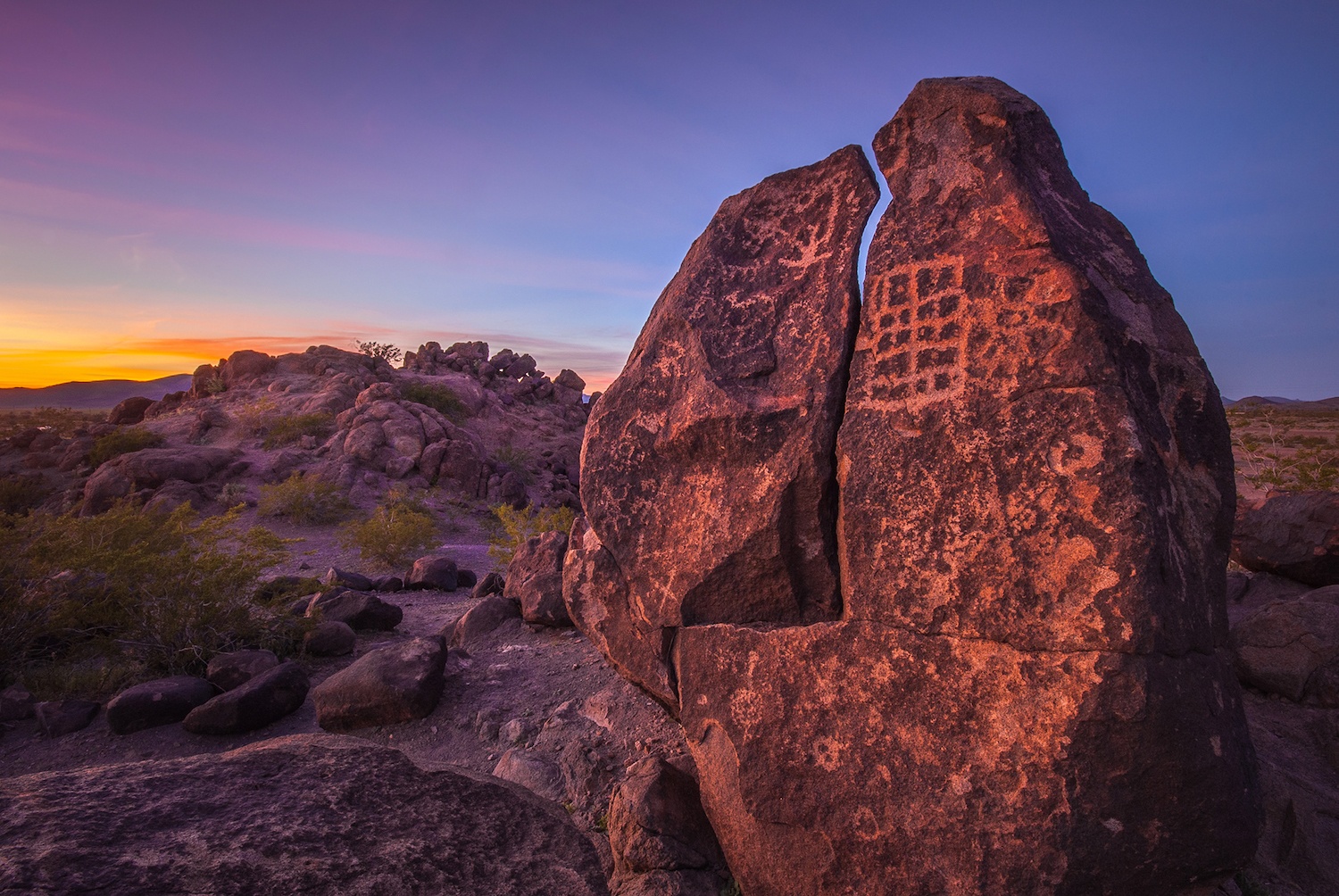
In Pima, a language of modern tribes who live south of Phoenix today, “Hohokam” means “those who have gone”
Bob Miller
Hohokam canals diverted water mostly from the Gila and Salt Rivers, where Phoenix stands today, and along which family farms outspread from main canals through the desert. These shallow and deep-cut canals had stone dams, gates, sub canals, and sub-sub canals. One artery in the East Valley carried water in a trench 15 feet deep. Through planning with neighbors, Hohokam farmers could open gates to the canal system, letting river water flood over their land.
Early in the year, rivers flooded or swelled with snowmelt. In late June and July, monsoons brought with them most of the annual rainfall. According to archaeologists, Hohokam farmers most likely lived with their families in compounds along the artificial waterways and farmed crops adapted to aridity, like the tepary bean, a legume that can thrive when watered only at the time of planting. Between these waterways and mutual agreement on how to use them, life was sustainably supported in what was otherwise a brutal land of scrounging for small game and cactus fruit.
But anybody who has felt the immortal heat of a 117-degree July sun—which can ground jets and glue your contacts to your eyeballs—knows that life in the Sonoran is precarious and ephemeral. After four long and distinct periods, by 1450 CE, the Hohokam had devolved from zenith to nothing.
In Pima, a language of modern tribes who live south of Phoenix today, “Hohokam” means “those who have gone.” Nobody knows exactly what happened to them. Many archaeologists believe that shifting climate and severe flooding damaged irrigation systems, triggering their mysterious demise. Around 1000 CE, not long before the Hohokam passed like an arid wind ripe with the incense of orange blossoms, canal building had ceased. The water supply couldn’t support any more farms.
With all the pros and cons of technology, the sustainability puzzle simply acquires more pieces. Phoenix has been working to fit them together. At the end of 2017, the city was one of the first to be certified platinum LEED for Cities—a globally recognized symbol of sustainability achievement—for its “built environment.” The designation considers 14 metrics, including energy, waste, health, and even water. Arizona, one of the country’s largest and sunniest states, has become a national leader in solar power. In recent decades, most of Metro Phoenix has ditched grass lawns in favor of xeriscaping, landscaping that uses desert-adapted plants like agave and ocotillo. The city has even long banked water against future shortage.
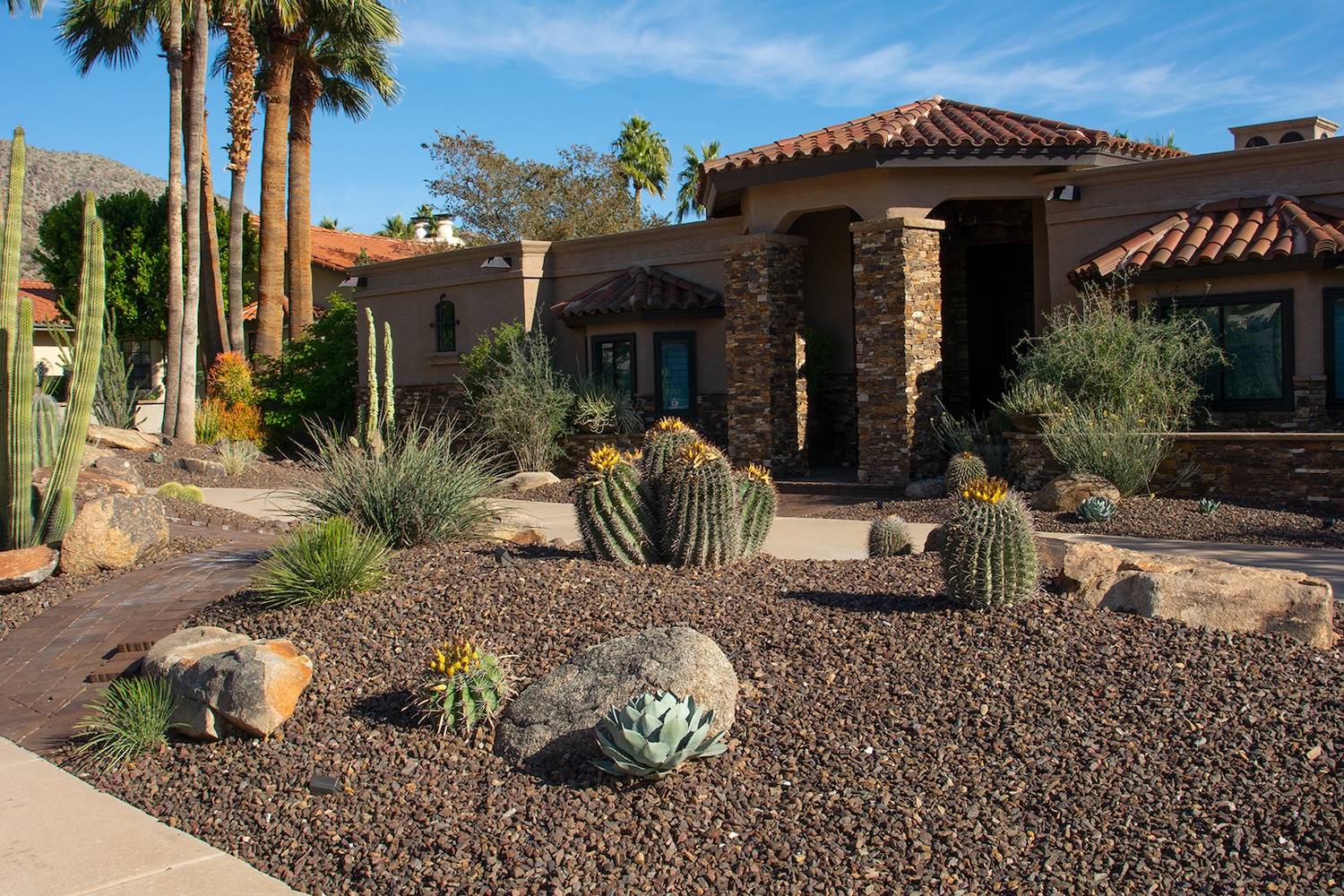
A xeriscaped yard in the Ahwatukee Foothills, Phoenix
Bob Miller
But Phoenix, just like every other American city, faces a long road ahead.
Phoenix sprawls over 517 square miles, and with just 28 miles of light rail and a bus system for public transportation in the metro area, people tend to travel by car. Largely because of these cars, the metropolis is the country’s seventh most polluted (by ozone). Vexingly, Phoenix’s multi-family housing units aren’t required to offer recycling, which has led to far too much plastic and glass in state landfills. In 2018, almost 69 percent of voters declined to support Proposition 127, a state ballot measure that would have required 50 percent of the city’s electricity to come from renewable sources by 2050. Come July in this part of the Sonoran, the hiss of misters is as natural as the trilling of summer insects. Come winter, people eat outside by heat lamp on sunny days in the balmy 60s.
“We live in a desert and have to act that way,” says Alan Dulaney, a recently retired hydrogeologist for the city of Peoria, a town of 168,000 people just west of Phoenix.
Arizona is growing rapidly, Metro Phoenix especially, compounding sustainability obstacles. Only some 38 percent of Arizonans were actually born in the state. In 2017, more than 25,000 people moved to Phoenix proper, and it has the highest growth rate of any city in the U.S. In 2018, Maricopa County, the county of Phoenix, and many of its outlying towns, was the nation’s fastest-growing. Cranes adorn sherbet horizons, draining of color as busy days fade; subdivisions are rising like quick eddies of red-brown dust.
All of these issues pale in comparison to the eternal water conundrum, the central piece of the sustainability-and-survival puzzle. The drama soon to unfold is almost biblical in its simplicity: There is a limited and shrinking supply, growing demand, and a long-run picture that looks, from many angles, hopelessly apocalyptic.
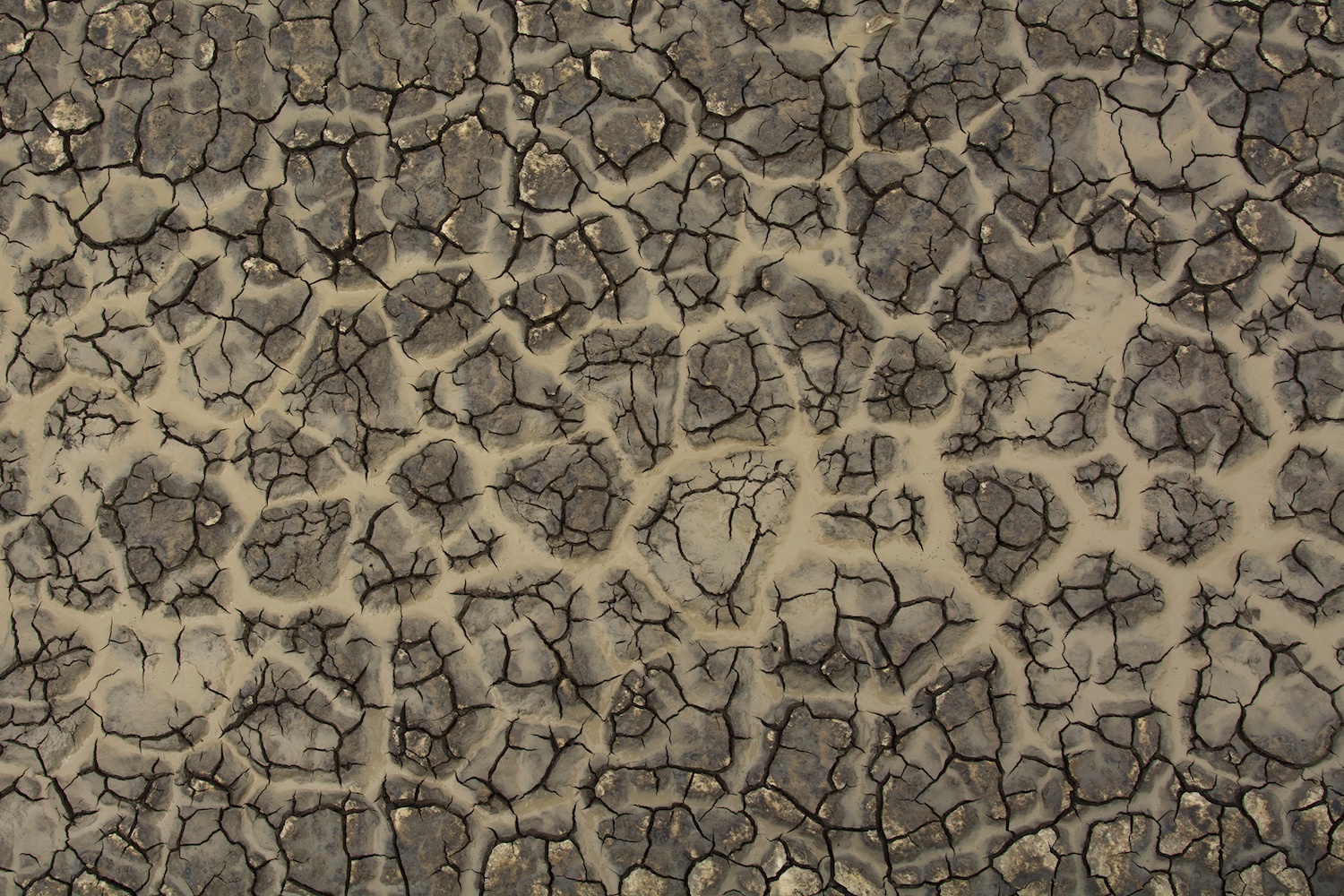
Most of the natural running surface water near Phoenix has dried up due to human intervention
Bob Miller
Just about all of the natural running surface water near Phoenix has dried up due to human intervention. These days, to slake, power, and nourish the city, water is pumped in from afar or from deep in the earth. Three major water sources—groundwater, Central Arizona Project (CAP) water from the Colorado River, and Salt River Project (SRP) water largely from the Salt and Verde Rivers—supply the metro area with its water. A small but growing percentage comes from treated wastewater, a source that offers some hope for the future. The many towns of Metro Phoenix each receive a different combination of water from these three primary sources.
“We have a diverse portfolio of water sources in Phoenix proper,” says Enrique Vivoni, an associate dean at Arizona State University, who specializes in hydrologic science. “Think of a pie chart for each city…. It’s not a static pie chart. It will be adjusted from year to year, depending on availability.”
With Lake Mead hovering near historic lows in recent years, these pie charts could soon shift seismically.
What happens when a rapidly growing Metro Phoenix is forced to rely less on the Colorado River?
Under the Drought Contingency Plan, Arizona faces Colorado River rationing in a given year if Lake Mead is projected to fall below 1,090 feet. Thanks to snowy winters in 2018 and 2019 and an unexpectedly wet early 2019 in the Colorado River Basin, Lake Mead closed the year at 1090.47 feet—just over the “tier zero” mark of 1,090 that would trigger the first level of rationing. But rationing in 2020 will occur nonetheless, as the determinative elevation wasn’t the actual year-end value, but the year-end elevation projected in an August 2019 study. And that prediction was, for the end of 2019, a water level of 1089.4 feet.
This projected elevation triggers tier zero, meaning that Arizona now faces a mandatory cut of 192,000 acre-feet from its water allowance this year. The Central Arizona Project (CAP) water will absorb this whole loss, a value that represents some 12 percent of its usual water supply. Because it has been preparing for expected shortages by banking water in aquifers and leaving extra water in the river, the CAP supply will survive this comparatively modest first round of loss. But not wholly, as CAP water routed for agriculture will be cut by some 15 percent.
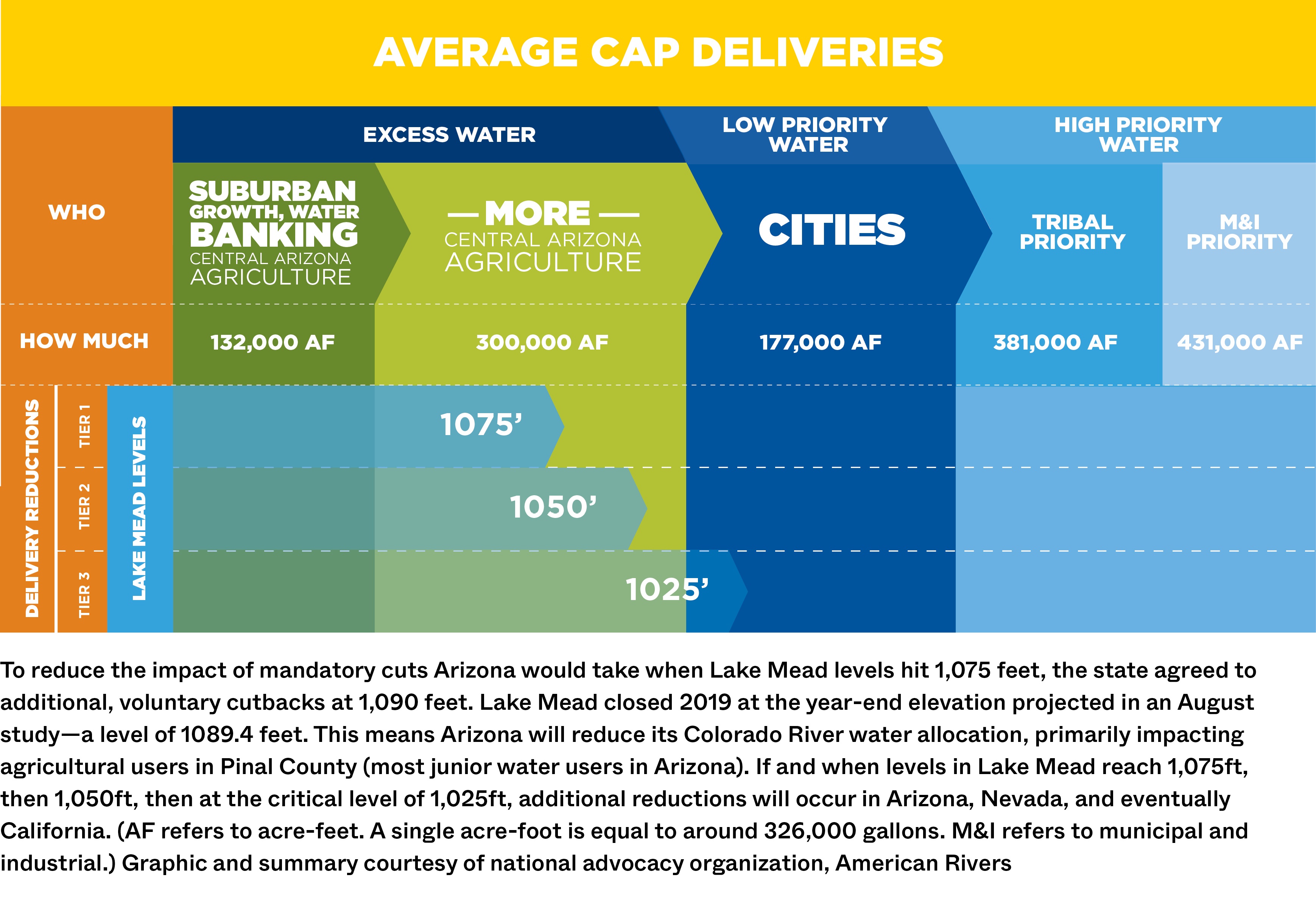
American Rivers
The current projection for 2021 is yet another round of tier-zero rationing. But if Lake Mead is projected to fall below 1,075 feet later this year or in a future year, Arizona will draw in 320,000 acre-feet less of its yearly Colorado River supply, amounting to a total reduction of 18 percent. The next tier of rationing begins at 1,050 feet, and would mean a reduction of an additional 80,000 acre-feet. Rationing tiers steepen from there, the point at which the Hoover Dam can no longer produce electricity. This schedule of rationing applies until 2026, the year the DCP expires. The recent agreement is a short-term gauze wrapping to keep the Colorado running while the stakeholder parties ponder long-term solutions.
“The Colorado River remains overallocated,” says Kathryn Sorensen, director of water services for the city of Phoenix. “We are at risk until that problem is resolved.”
So what happens when a rapidly growing Metro Phoenix is forced to rely less on the Colorado River? Water supply pie charts will evolve, and SRP’s slice will become more important. That will in turn make the efforts of people like Chip Norton even more vital. Another change is that Metro Phoenix will have to lean more on groundwater supplies.
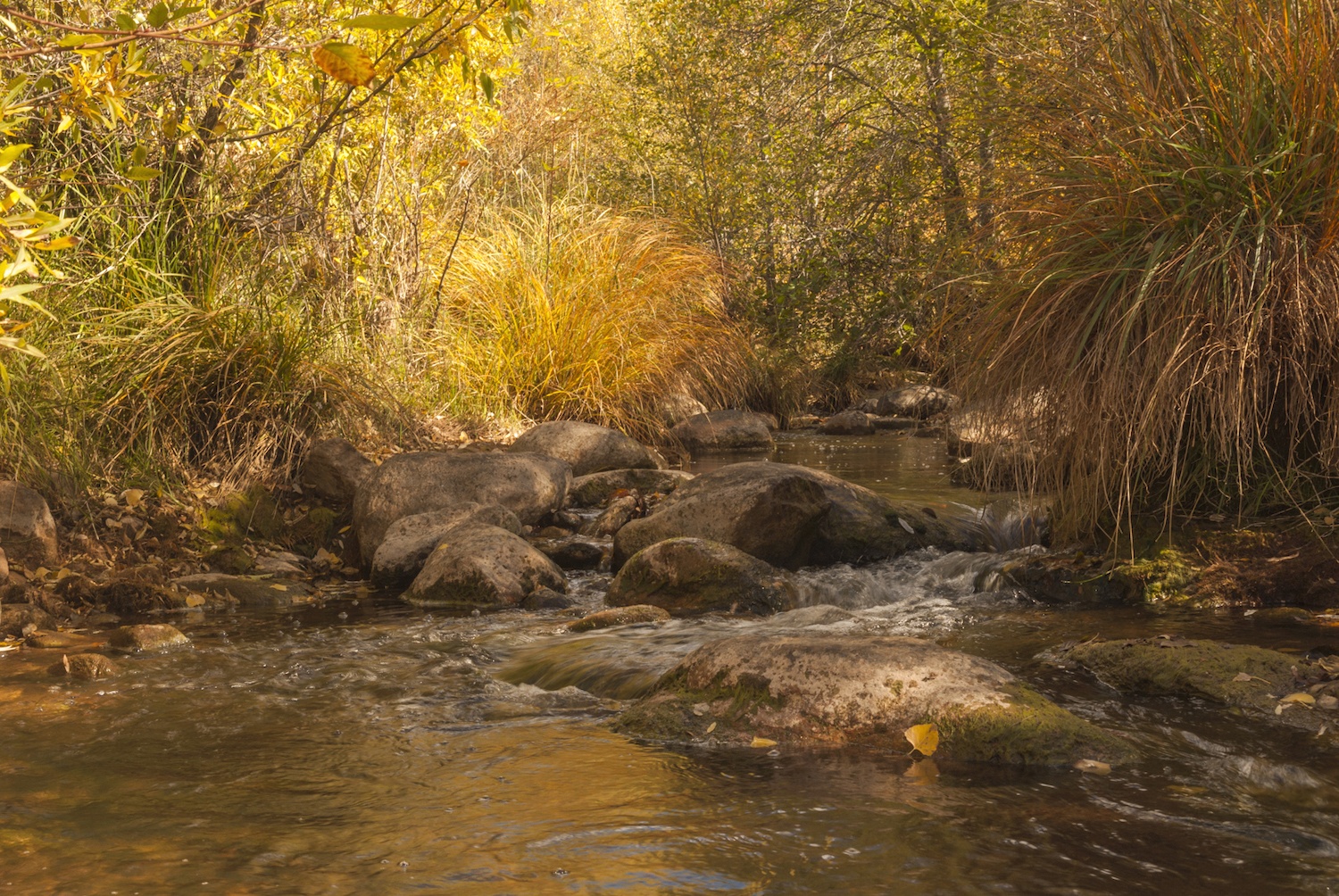
The Verde River declined by 10,000 acre-feet per year between 1910 and 2005
Bob Miller
The Salt River Project’s (SRP) supply of water to metro Phoenix provides a sunnier outlook than the Colorado River supply. Still, there are concerns. Increasing wildfires threaten the forests of the Salt River watershed, and SRP’s other primary river faces another kind of threat. The U.S. Geological Survey has found that, due to “human stress,” the Verde River declined by 10,000 acre-feet per year between 1910 and 2005. The Survey also projects a continued decline of between 5,400 and 8,600 acre-feet per year, from 2005 until 2110. Like the CAP slice, the SRP piece may also shrink in time.
That leaves in question the third and final slice of the primary water supply pie: groundwater.
“It’s the ultimate hedge against shortage. Groundwater is a very important source of water for both the city and agriculture.”
Some 43 percent of the water used in Arizona is groundwater. And it has to be strictly managed. In 1980, the state passed the Groundwater Management Act, regulating its use in Arizona’s most populated areas. Groundwater is foundational to the protean water approach that life in a desert city demands. Many farms close to Phoenix and in rural areas that the pipelines don’t reach depend largely on groundwater. In times of surface water shortage, latent groundwater can be used instead. CAP and SRP were created in part to alleviate the pressure that Metro Phoenix puts on its groundwater supply. But during cyclical drought or other times of exceptional need, water awaits human-made pumps underground.
“It’s the ultimate hedge against shortage,” says Alan Dulaney, the former Peoria hydrogeologist. “Groundwater is a very important source of water for both the city and agriculture.”
Sorensen, director of water services for the city of Phoenix, echoes Dulaney’s sentiment: “Phoenix has long protected its aquifers,” she says.
“It’s a finite resource,” says hydrologist Kathleen Ferris, who helped write the 1980 act. “It’s an ancient resource. Most of the groundwater in Arizona was stored in the ground in past geologic ages. When you take it out, it’s gone, unless you’re artificially recharging that supply.”
Knowing this, Phoenix has been recharging its supply. For years, surplus streamflow from the Colorado River was routed into aquifers. Sorensen notes that in 2019, only around 2 percent of Phoenix’s water came from aquifers. The goal was to keep groundwater banked against future shortages. (One critical note: The tier-zero cuts for 2020 mean that CAP won’t be able to recharge aquifers this year.)
“It takes a lot less water to grow a subdivision than grow a crop.”
With the flow of CAP water and SRP water to remain—at best—constant over time, those aquifers will be needed, especially with continued population growth and growing water demand. But drawing water from aquifers comes with its own problems. First, groundwater requires pumping, making it a more expensive source. Farmers already operate on thin margins, and are likely struggle with the added expense. (The first DCP cutbacks are limiting CAP water to farmers, mostly those in Pinal County, southeast of Phoenix, forcing them to use more groundwater.) Second, the deeper you draw from aquifers, the worse the water quality. Down many hundreds of feet, Dulaney says, “the water has been in contact with the rocks for longer, and has geochemically evolved into water that would require treatment.” Third, a recent study by the Colorado School of Mines and University of Arizona has shown what Ferris says policymakers have long known: groundwater pumping can harm surface streamflow levels. Fourth, parts of Metro Phoenix have been sinking in the slow wake of groundwater pumping from years ago, a process that could ultimately result in land fissures.
And finally, aquifers are finite.
Looking into the near and middle future, all three major pieces of Metro Phoenix’s water puzzle have shortcomings. Looking beyond, toward the middle and later decades of this century, and considering growth and the slow colossus of climate change, the looming scarcity issues take on darker gravity.
Over time, warmer temperatures are steadily making landscapes hotter and drier. Since 1958, the average annual precipitation in Arizona has decreased.
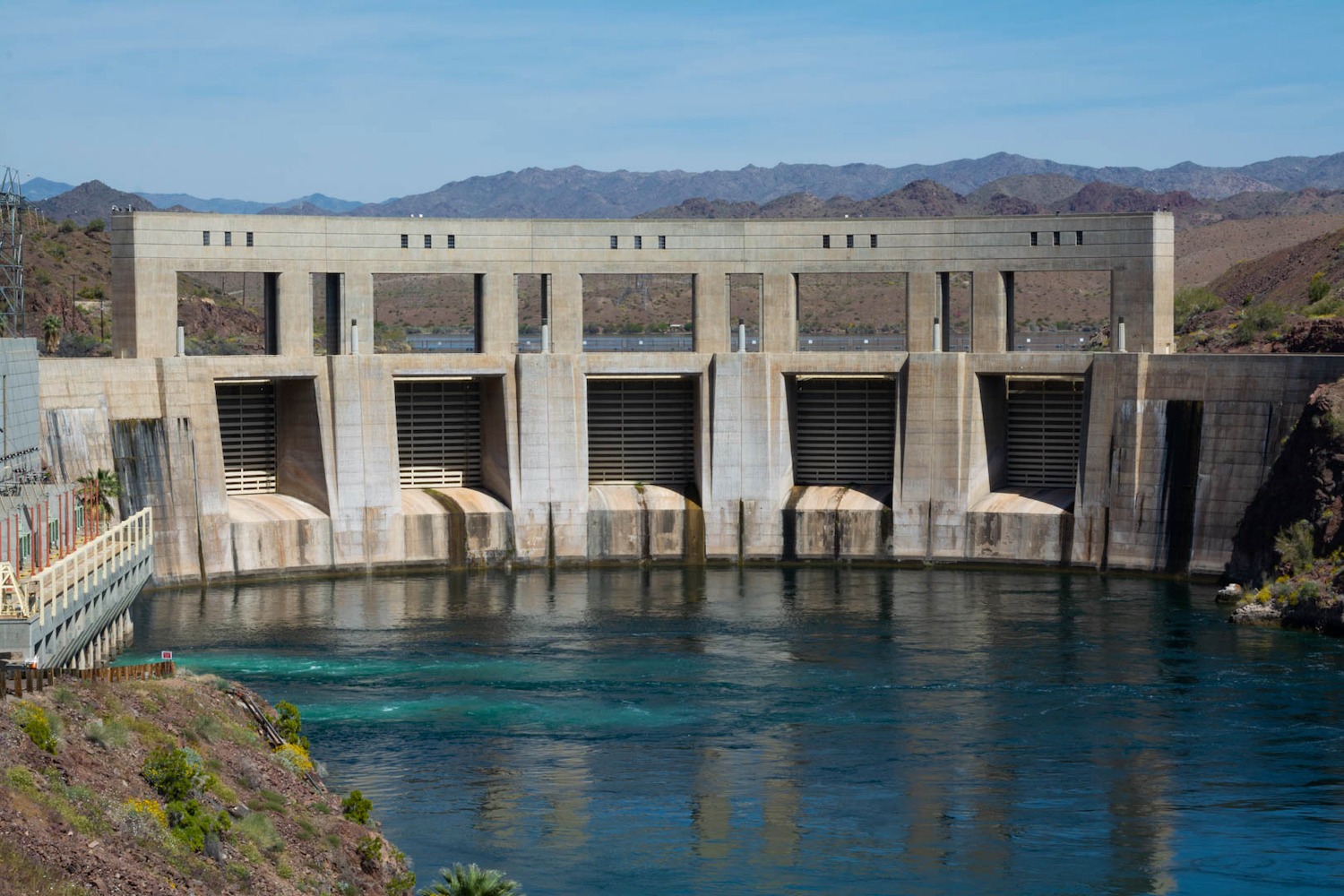
The Parker Dam crosses the Colorado River 155 miles downstream from the Hoover Dam. The decline of streamflow will only intensify with climate change
Bob Miller
A group of longtime Colorado River scholars known as the Colorado River Research Group concluded in 2018 that the Colorado River is experiencing “aridification,”—that is, “a transition to an increasingly water-scarce environment.” Whether aridification or something less severe, the drying environment is altering streamflow. Snow is melting earlier. Soil moisture has changed. Runoff efficiency is down. All have resulted in less streamflow, and all will only intensify with climate change.
The effects of less streamflow will ripple out across the region. Again, a lower Lake Mead means that the Hoover Dam creates less or no electricity. Less water, too, means that farmers may have to fallow more fields, and that jobs will be lost as certain future crops cannot be grown in the rising heat.
This will change agriculture quickly. Some 70 percent of Arizona’s water is used to support agriculture. Come shortages, more will have to go to municipal use. In reality, this may happen in greater Phoenix without water rationings, as developers are buying farmland, resulting in less acreage to irrigate. Farmers who do hold on will have to transition to more water-efficient methods and crops, meaning no more sprinklers, flood irrigation, or cotton.
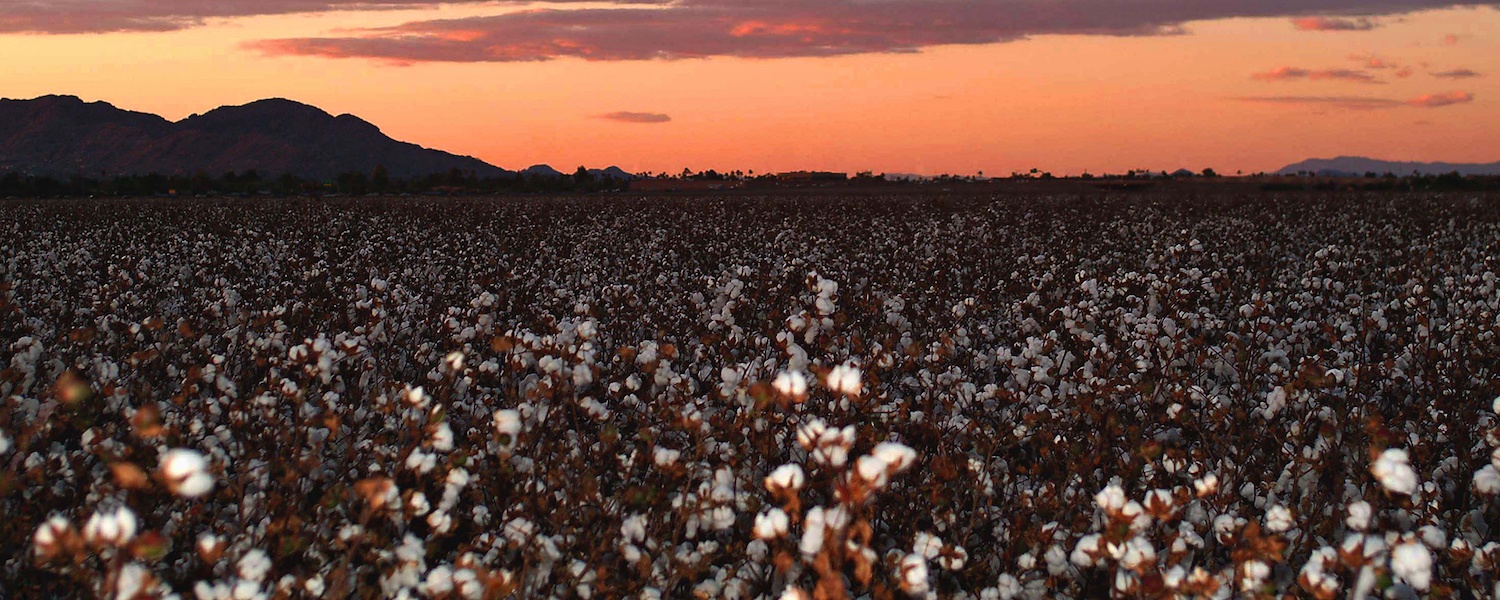
Water pressures are likely to erode agriculture in greater Phoenix and Arizona, a state that residents say was founded on 5 C’s: copper, cattle, cotton, citrus, and climate
Bob Miller
One counterpoint is that, since the 1970s, water usage in greater Phoenix has declined. As Sorensen says, “it takes a lot less water to grow a subdivision than grow a crop.” Families need less water to live on than crops do to grow, given a same-sized parcel of land, and residential development has been replacing agriculture as a primary use of land. Population growth, however, may close this water gap.
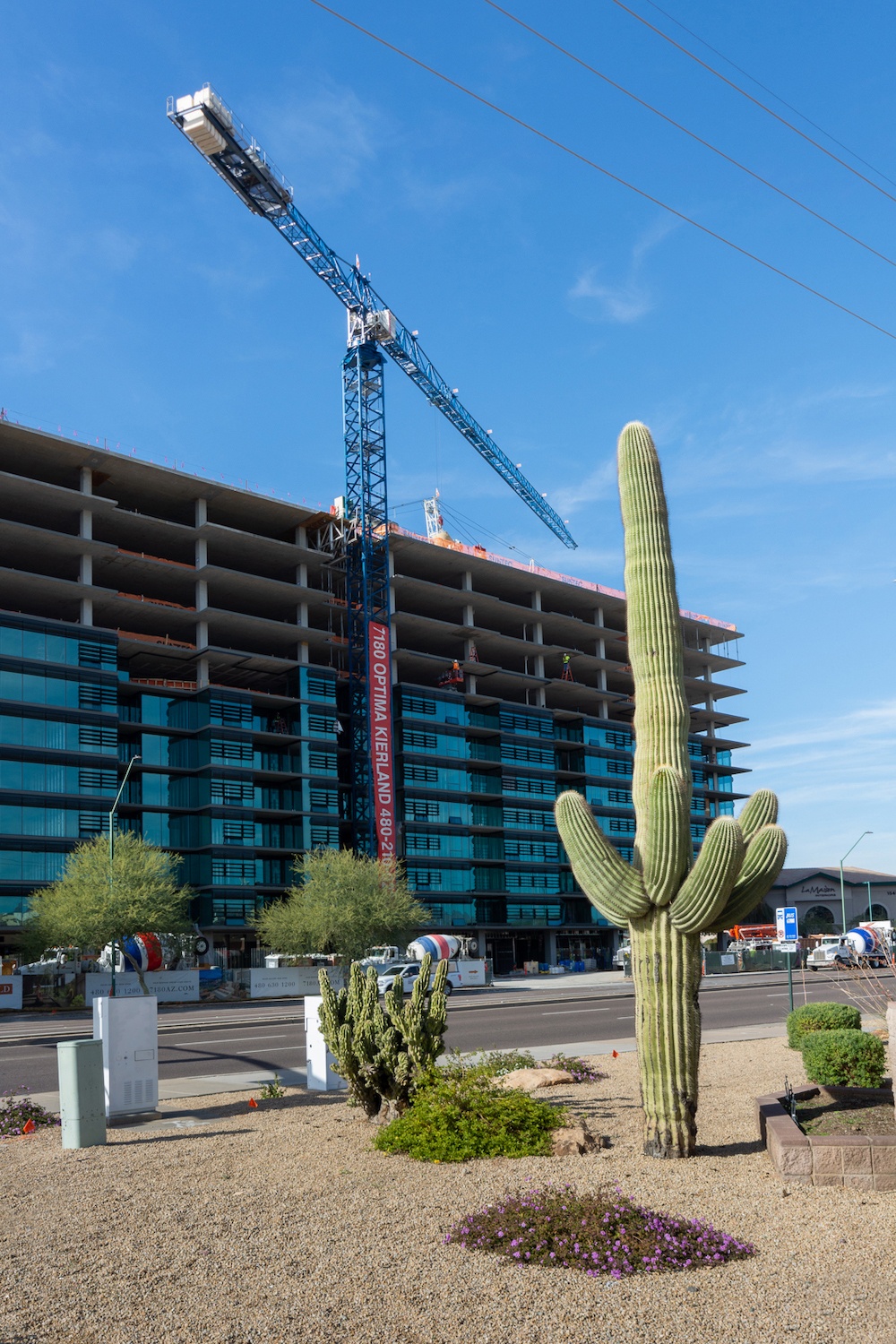
Bob Miller
Residential development has been replacing agriculture as a primary use of land in Metro Phoenix
“For a long time, the tradeoff between residential growth and farming kind of balances out,” Dulaney says. “But in Maricopa County, we’re about to reach the end of that, because there’s not much agriculture left.”
Climate change will place other, non-obvious strains on an already-strained water supply, including through more intense wildfires. In July of 2019, the first summer monsoon came to greater Phoenix weeks late, sweeping ash from a June fire that burned 124,000 acres into the Salt River. In that same month, a fire burned 1,960 acres near the Verde River’s watershed, just beyond Flagstaff. And just a month later, in early August, more than 2,000 acres burned in the Salt River Basin. Runoff after these wildfires, Dulaney says, is “loaded with stuff that you don’t really want in your water supply.” This water can be treated and used, but treatment is expensive. (Another option is to treat saltwater from the Sea of Cortez, which divides mainland Mexico and the Baja, California Peninsula, but desalinization is costly in both dollars and carbon emissions, feeding the drying cycle.)
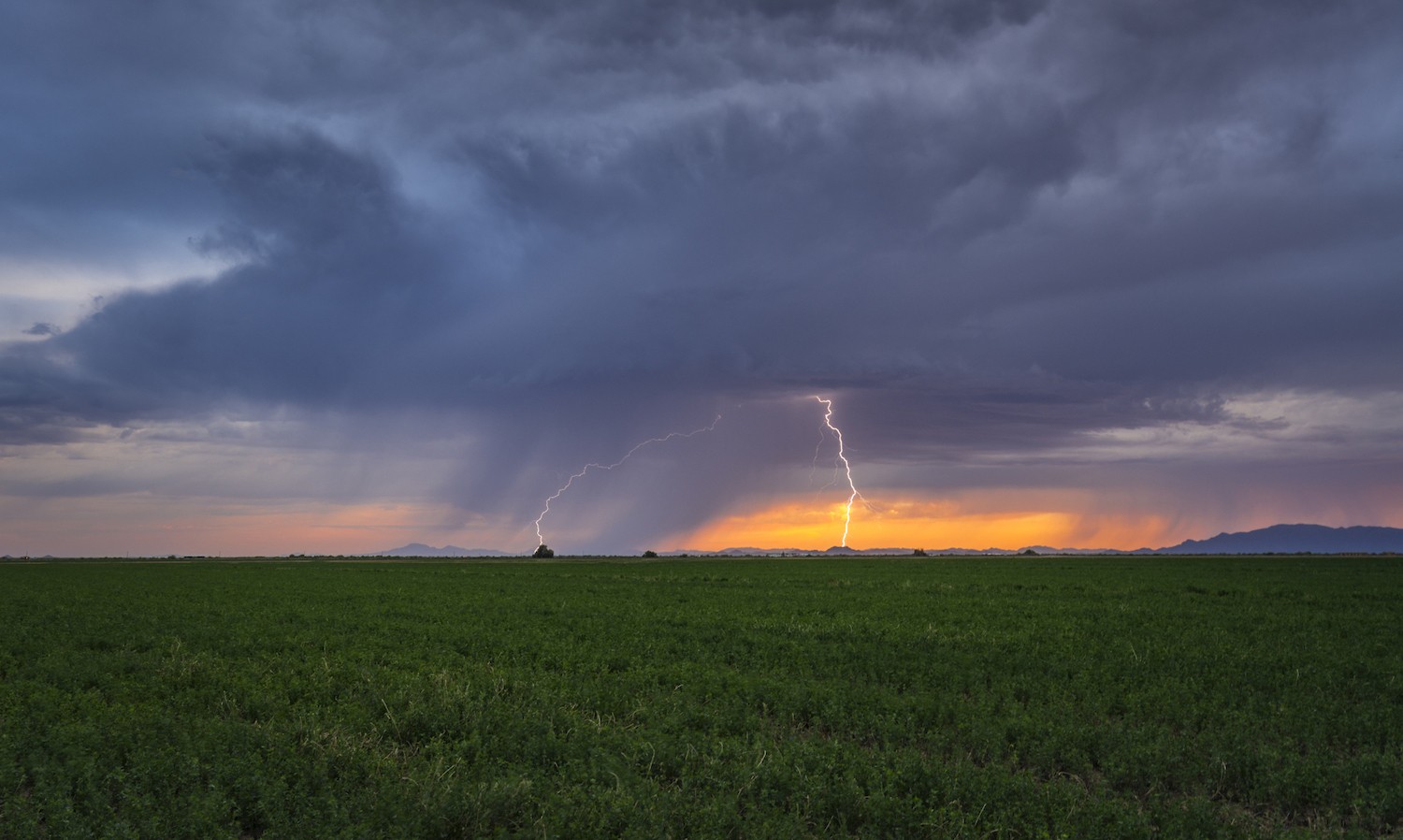
Summer monsoon activity over the Gila River Indian Community
Bob Miller
Phoenix is far from the country’s least sustainable city, as some have claimed. So far, the city has planned well for future water shortages, including investment in water infrastructure and forest health in watersheds, promoting conservation, banking excess water, furthering wastewater recycling, and implementing water fees that become more onerous during summer. But the area’s population is rapidly increasing while its rivers are dead or dwindling. By 2100, Phoenix summer days are projected to be an average of 114 degrees. Rivers and groundwater supplies will look much different then. So what happens when a desert city runs out of water? Hopefully, through Herculean city management and an evolution in human thinking, we never (again) find out.
The trends and trajectories snap an inevitable question into focus. Could Phoenix run out of water in the coming decades? Unless the beginning or middle of this century brings some environmental catastrophe beyond the slow-moving one we can already see, the answer is probably no. The city has prepared. The metro area’s groundwater reserves tunnel deep. Even rivers like the Colorado, though steadily diminishing, still bring robust flows.
A more interesting question is how greater scarcity could transform central Arizona.
At the core of the probable answer lie farms and rural communities, which will bear the brunt of the hardship. Today, irrigated agriculture accounts for about 70 percent of water usage in Arizona, down from past usage rates that reached as high as 90 percent. Phoenix was settled near the West for its agricultural potential. As its metro area has ballooned in population and acres of houses and pavement, agriculture has pushed out to the margins—largely beyond Maricopa County and to the outskirts of the metropolis’s reach. Again, residential land requires less water than farmland. For many reasons, water being just one, Arizona has long been banking on and encouraging residential growth.
“Over time, Arizona planned for and expected a long-term transition in Maricopa County away from agriculture,” says John Fleck, director of water resources at University of New Mexico. “Its long-term water management plan was that, as development took over the land, that’s how they were going to manage water supply.”
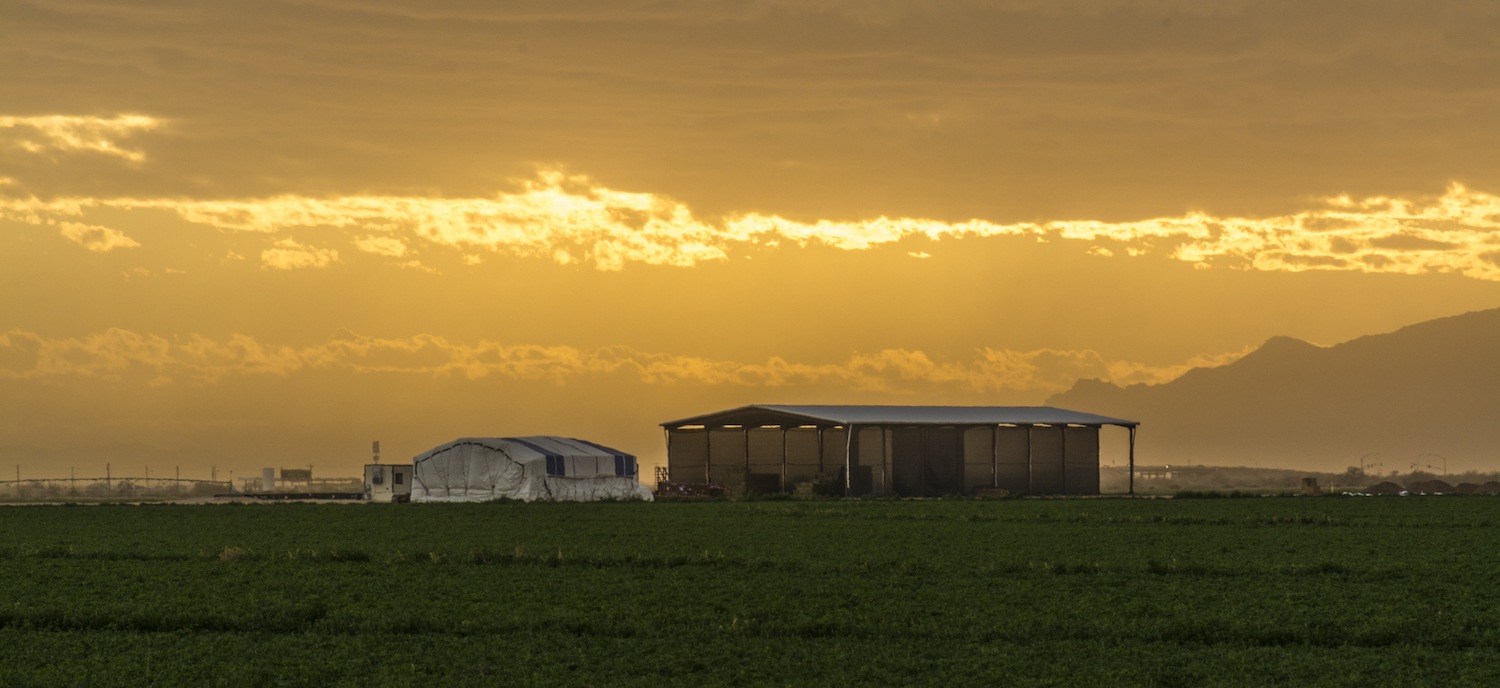
The Gila River Indian Community will sell back 830,000 acre-feet of water over 25 years to Metro Phoenix
Bob Miller
In the decades ahead, water pressures are likely to erode agriculture in greater Phoenix and Arizona—a state that residents say was founded on 5 C’s: copper, cattle, cotton, citrus, and climate, four directly related to agriculture.
Beyond scarcity, farms that rely on groundwater will have to face a new hurdle, one that may come early for farms already pumping at an unsustainable rate. As they go deeper into groundwater reserves, they will be spending more on energy needed to pump. “Before long, no one’s going to be able to pay the costs,” says Robert Glennon, professor of law and policy at University of Arizona. “You know, you couldn’t make money growing marijuana pumping from 1,000 feet.”
There is also the threat that private funds will get interested in buying water rights—and the possibility that farmers will cash out in that scenario, rather than face an uncertain present and future. Many have already sold. Actors like Water Asset Management have been active in the region for years, investing in water rights with the aim of profiting now and in the longer term, as water becomes more valuable.
However, selling one’s farmland and/or water rights doesn’t require a hedge fund on the buying side. Farmers can sell to residential developers right now, often to the tune of six or seven figures. And even when situated in areas undesirable for subdivisions, they can sell to cities like Phoenix. “It’s already happening,” Glennon says. “The problem is big for the agricultural community. If a farmer sells out … it’s one less farm to share the infrastructure costs of the irrigation district.”
“When the choice is abandoning Phoenix or growing less alfalfa in the West, I just don’t see how you can grow alfalfa.”
In future water-supply battles between agriculture and cities, cities are always going to win. Later this century, when greater Phoenix is likely to really feel the squeeze, the city will allocate so that agriculture suffers first.
“That’s the broader tradeoff we’re going to face in the Western U.S.,” says Fleck. “We have 80 percent of water in big systems that’s going to agricultural use. It’s just a tiny fraction of the economies of these places.” On top of this imbalance (one also facing cities like San Diego, Los Angeles, Denver, Santa Fe, and Albuquerque), Arizona is small in the greater algebra of who feeds the nation. When Phoenix comes to need water, it will be routed away from farms.
“How we come to terms with that really ugly reality will play out over the next century,” says Fleck. “When the choice is abandoning Phoenix or growing less alfalfa in the West, I just don’t see how you can grow alfalfa.”
With wild mint fragrant in the sun on her dashboard, Velvet Button, who is Akimel O’odham and Tohono O’odham, drives across her family farm in the Gila River Indian Community. Her truck plumes dust over the Arrakeen land just southeast of Metro Phoenix, in Pinal County, where many farmers beyond the reservation are dependent on Colorado River water and would face rationing with the first DCP cuts. Ramona Farms stretches in patches over 4,000 acres and 27 miles of the reservation, a quilt of verdant fields and deeply cracked soil in a bowl of Sonoran mountains, which frame the dusty bed of the Gila River. These days, there is no Gila River in these parts. It is among the area’s dead or near-dead rivers, a list that includes the Salt, San Pedro, and Santa Cruz.
The reservation is home to Akimel O’odham, which means “river people.” Just a few generations ago, Button says, one of the tribe’s main proteins was fresh fish.
“We will never have the water, the river back,” she says, surveying the drylands. “It’s not possible.”
Button crosses the dry riverbed giving farm tours, transporting food, and speaking about indigenous crops. Her family grows four kinds of indigenous corn, three heirloom wheats, and three varieties of tepary bean. Ramona Farms is best known for tepary beans, the low-water bean that, according to Tohono O’odham belief, forms the stars of the night sky. Button’s parents, Ramona and Terry, even selected a new varietal, the black tepary (s-chuuk bavi). Like the others, the black tepary thrives in arid places.
Though drip irrigation is more efficient, irrigating by canal is an ancient practice in these parts. The Button family has modernized it by creating a computer program to monitor the water they flood into their fields. “They’ve all been laser-leveled and concrete-ditched, so we have the most efficient water use and cropping,” Velvet says. “A properly lasered field is flatter than a pool table, with just enough fall to pull the water to the end.”
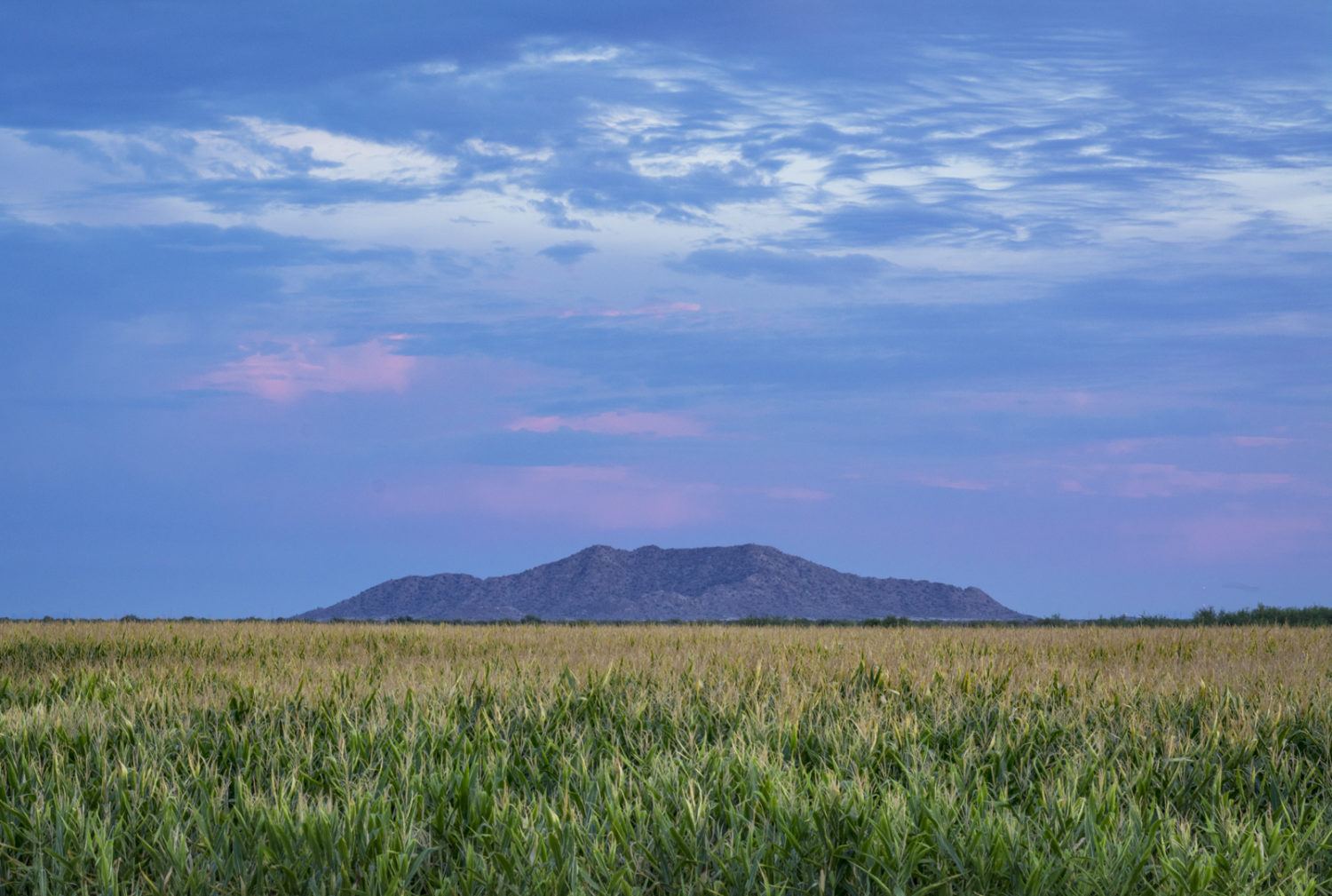
A field of sorghum in the Gila River Indian Community
Bob Miller
Driving east, mint smell sharp, a wetland oasis comes into focus: a manmade lake with paths looping through glassy water. This isn’t a desert mirage, but a new park. Stephen Roe Lewis, governor of the Gila River Indian Community, has said that the wetland park is meant to recall the old Gila River. There are riparian insects, swooping egrets, and young mesquite trees low along the carving pathways. Soon, the park slides into the rearview. Velvet starts to cross a graffiti-tagged bridge. It spans part of the Gila riverbed now prone to powerful flash floods.
Across the bridge, mechanical excavators whinny, jerk, and swoop. They are digging for the Pima-Maricopa Irrigation Project (P-MIP), a vast system of pumps, canals, concrete channels, and aquifers that will deliver water to 143,000 acres of the reservation. Currently, much of tribe’s water comes from the Colorado River. Under the DCP, the Gila River Indian Community will sell back 830,000 acre-feet of water over 25 years to Metro Phoenix. For now, supply exceeds demand. But even with the surplus, the tribe has lived through the recent and remote past, and doesn’t want to be too reliant on the Colorado in any future.
“Because of the drought,” Governor Lewis says, “because of the DCP, we’re looking for ways where we can actually store water and build up our underground capacity as well.” When finished, the many miles of canal should resemble a river shimmering out over the desert. Main channels will feed into smaller channels, flowing to properties like homes and family farms. “It will take years to complete,” reads the project’s website, after a prelude invoking the past, “but in the end the community members will once again hear the sweet music of rushing water.”
CORRECTION: An earlier version of this story dated the AZ Prop 127 vote to 2017. In fact, it was in 2018. We regret the error.
